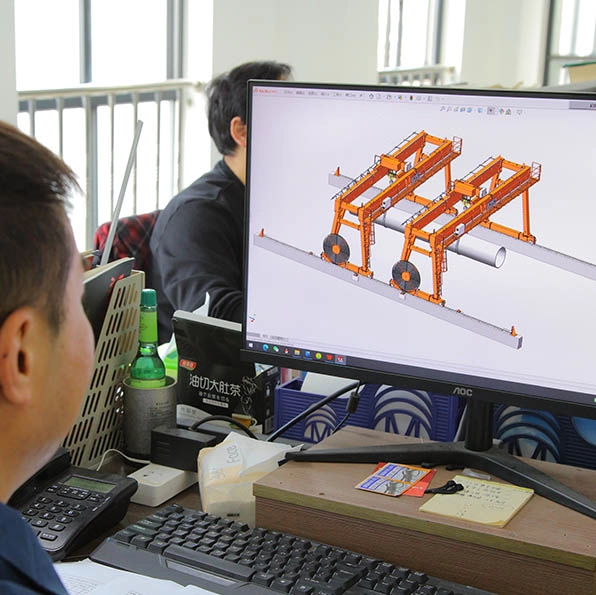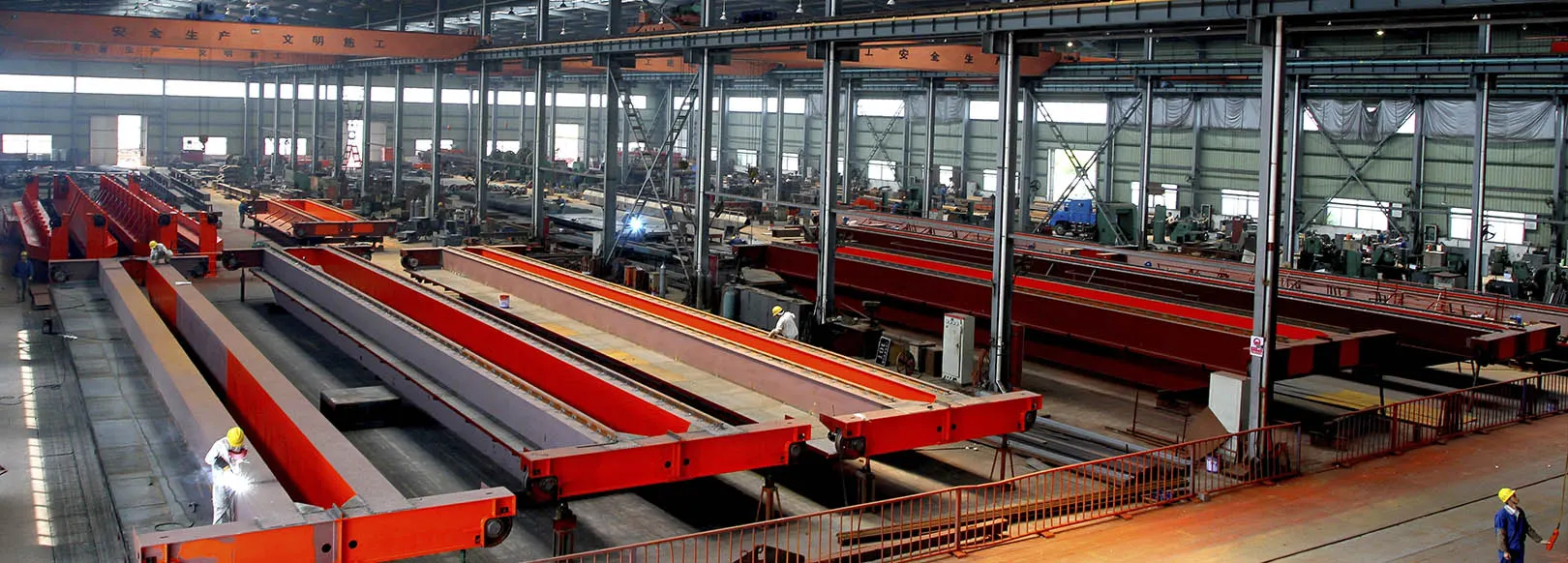From Design to Delivery: How Professional Crane Manufacturers Manage Quality
From Design to Delivery: How Professional Crane Manufacturers Manage Quality
Date: 2025-11-06 Share:
Introduction
In fields like building sites, factories, and shipping hubs, cranes play a vital role. They hoist, move, and place heavy items with sharp accuracy and smooth speed. But each sturdy crane comes from a detailed making system built to secure safety and strong work. A crane stays reliable only through the careful steps that shape it.
A solid crane making flow, backed by tough factory quality control in crane production and full crane assembly inspection procedures, turns basic steel into smart lifting tools. This article walks you through every part—from first ideas to last handover—showing how leading makers keep standards high, spot flaws soon, and make sure cranes hit top safety marks.
The Foundations of Excellence: Design Phase in Crane Production
Conceptualizing Crane Requirements
Each strong crane starts with a firm grasp of what clients want. The work kicks off with a deep talk to pin down key points like top and bottom load limits, how often it runs, reach length, lift height, and surroundings (inside or outside, heat levels, moisture, or rust risks).
When it fits, experts visit the spot or check building plans to lock in open spaces, support strength, and base limits. Such details let makers build cranes that match the client’s daily setup just right.
They also compare market options and rival products to set safe buffers, backup plans, and budget lines. Early shapes come from modern CAD and 3D design tools that map the crane’s frame—main beams, trolleys, end carriages, and wire paths.
At the same time, planners make sure rules match global guides like ISO, EN, CMAA, ASME, or GB/T. Adding these rules early stops pricey fixes and speeds up approvals down the line.
Engineering Analysis & Prototyping
After the idea sets, experts run deep Finite Element Analysis (FEA) on main parts like the main girder and end beams. They check stress spread, bending risks, and wear life. Other tests cover motion, shake modes, and tremor levels. This keeps unsafe shakes away in actual use.
Picking materials matters just as much. Strong low-mix steels such as Q345, Q460, or S355 get chosen for their tough yield, easy welds, and long wear. Sample parts—mainly welded spots—face break tests and scan checks to prove they hold up.
A back-and-forth cycle among design, weld, and fix teams sharpens frame strength and build ease. It finds the right mix of stiff form and light weight.
Embedding Quality Control from the Beginning
Quality begins at the drawing board, not the shop floor. Makers run planned design checks at each stop to test ideas, flag dangers, and confirm rules. First Article Inspection (FAI) makes sure first pieces fit the plan before big runs start.
Every tweak follows tight change rules. This guarantees the shop uses the newest okayed sketches. Design proofs include wear buffer checks, safety level tests, and backup reviews. All choices get written down for clear tracking. This builds a quality base that runs through the whole making.
Precision Crafting: Machining & Fabrication in the Crane Production Process
Material Procurement & Initial Processing
The following stage starts with top-grade raw supplies. Every steel plate, forged piece, or beam lot gets entry checks for strength and mix traits. Then, cuts and shapes happen via laser, plasma, or waterjet methods. These keep tight size limits.
Lot marks provide full follow-from raw bar to final crane. This stands as a core part of factory quality control in crane production.
Advanced Machining & Welding
Exact machining on CNC machines gives under-millimeter precision for key faces. Weld tasks—robot done when possible—stick to firm weld plan guides. Hand welders hold certificates to global levels.
After welds, each link faces non-destructive testing (NDT). This covers ultrasonic, x-ray, and magnet particle scans. When needed, heat steps like stress ease or softening boost frame strength.
In-Process Quality Assurance
While parts form, Statistical Process Control (SPC) and live measure tools watch size limits non-stop. If a shift happens, an Andon warning can halt work for quick fixes.
Set check stops—post machining, pre weld, and after weld—make sure each step clears before moving on. All measure tools get regular tune-ups. Records stay for full rule match.
Building Reliability: Assembly & Crane Assembly Inspection Procedures
Component Integration & General Assembly
When parts finish shaping, joining starts. Frame pieces—main beams, cross girders, and end carriages—connect first. Then come hoists, trolleys, wire holders, and safety gear.
For big cranes, a test fit in the shop checks perfect match and line-up before break-down for shipping. This spots and fixes join problems early.
Step-by-Step Assembly Protocol
A standard join order keeps things even: base frame first, then end beams, next cross girders, followed by hoist parts, wiring, and safety items. Laser line tools and exact survey gear confirm shapes. They ensure straight edges and right angles.
Key bolts get twisted to exact force with tuned wrenches. Holders and guides keep lines true during join. This cuts build-up size mistakes.
Rigorous Crane Assembly Inspection Procedures
The crane assembly inspection procedures rank as key quality blocks. They cover:
Visual scans of welds, paints, and faces.
Size checks for bend, curve, and line-up.
Electrical probes for wire shield, ground links, and path strength.
Mechanical runs for brakes, motors, end switches, and locks.
Test drives—empty and loaded—to prove action and quick response.
Static and motion load trials mimic real work. They check frame reactions against plan math. When asked, third-party watchers or clients see tests for open proof.
After good tests, a Final Quality Audit confirms full lists, correct papers, and all extras before send-off.
Validation Through Testing: Ensuring Crane Durability & Safety
Static & Dynamic Load Testing
Static trials add slow weight up to 125% of rated load. They spot lasting bends. Dynamic trials, in contrast, put the crane through speed changes, stops, and shakes. Tools like strain meters and motion sensors track real responses.
Electrical & Hydraulic System Evaluations
Electrical parts face shield and link tests. Brakes get checked for stop length and trust. Hydraulic bits—if used—scan for drips, steady hold, and force evenness. Safety guards like overload blocks and quick stops also get proven.
Integrated Quality Audit & Certification
All test data, check notes, and track records gather into a final quality file. The crane earns its okay certificate only when all points pass. Any miss starts deep cause hunt and fix steps before release.
Seamless Transition: Shipping, Installation, Post-Delivery Support
Packaging & Logistics Planning
Big cranes break into parts for safe moves. Pieces get rust-proof layers, tight wraps, and bump guards. Move teams map paths, mark boxes, and lift spots to avoid harm in handling.
On-Site Delivery & Reassembly
At the site, techs guide re-join—checking lines, rail sets, and wire links. Local tests copy shop okay results. This keeps work the same. Operators and fix crews get direct training and full guides.
Ongoing Maintenance & Lifecycle Support
Post-handover, makers suggest regular care plans and check times. Full track notes ease later reviews, fixes, and updates. Field work feedback loops back to better future plans.
Partner with Nante Crane for End-to-End Quality Assurance
Nante Crane is one of China leading crane and crane components designer and manufacturer. At Nante Crane, quality runs through everything—not just one part. From plan proofs to motion trials, quality control weaves into each step of the crane production process. Our crane assembly inspection procedures ensure every crane rolls out set for long, safe runs.
To see exact making with world rules, contact our sales team for a quote or tech talk. Let the team boost operations with cranes built to last.
FAQ
Q1: What is the crane production process?
It covers the whole path: needs → idea & plan → checks & samples → part making → join → scans & trials → pack & ship → set-up & care.
Q2: How does factory quality control in crane production work?
It brings design looks, FAI, supply checks, mid-step scans, NDT, SPC watches, join reviews, and end trials—all with full data tracks.
Q3: What are key crane assembly inspection procedures?
They include eye checks, size probes, and wire tests; bolt force confirms; action runs; and static/motion load checks with safety proofs.





